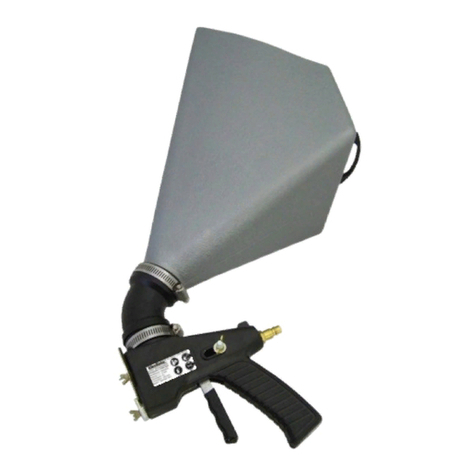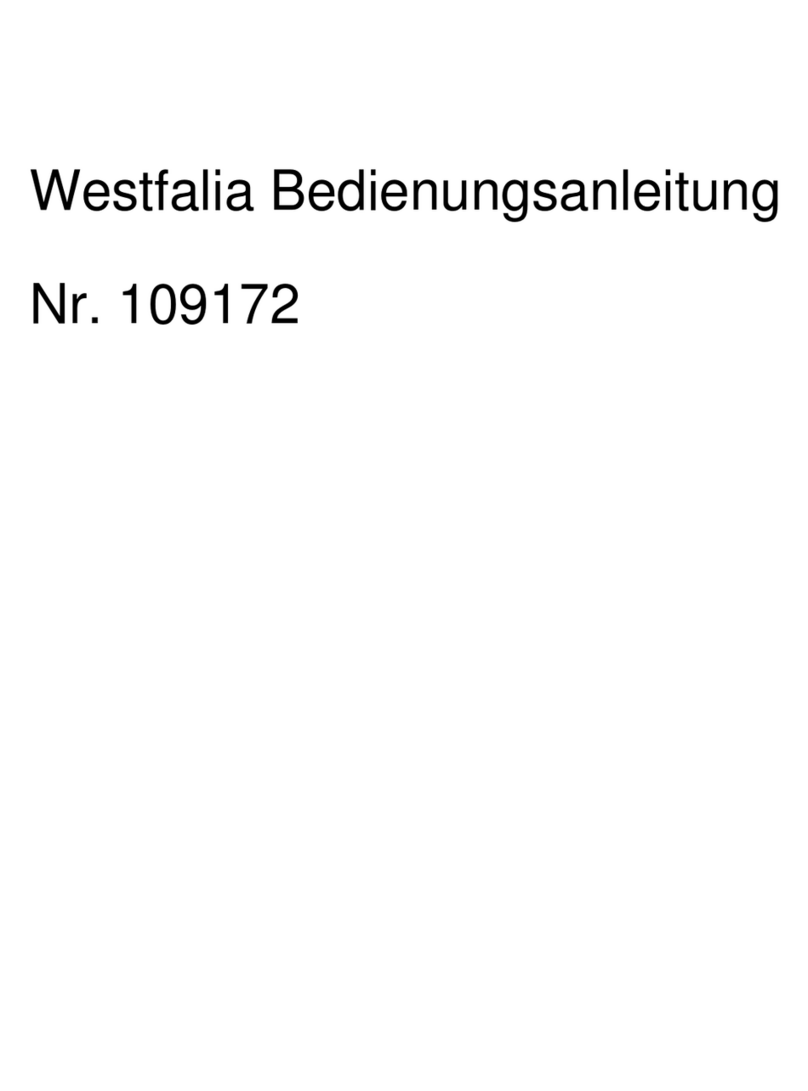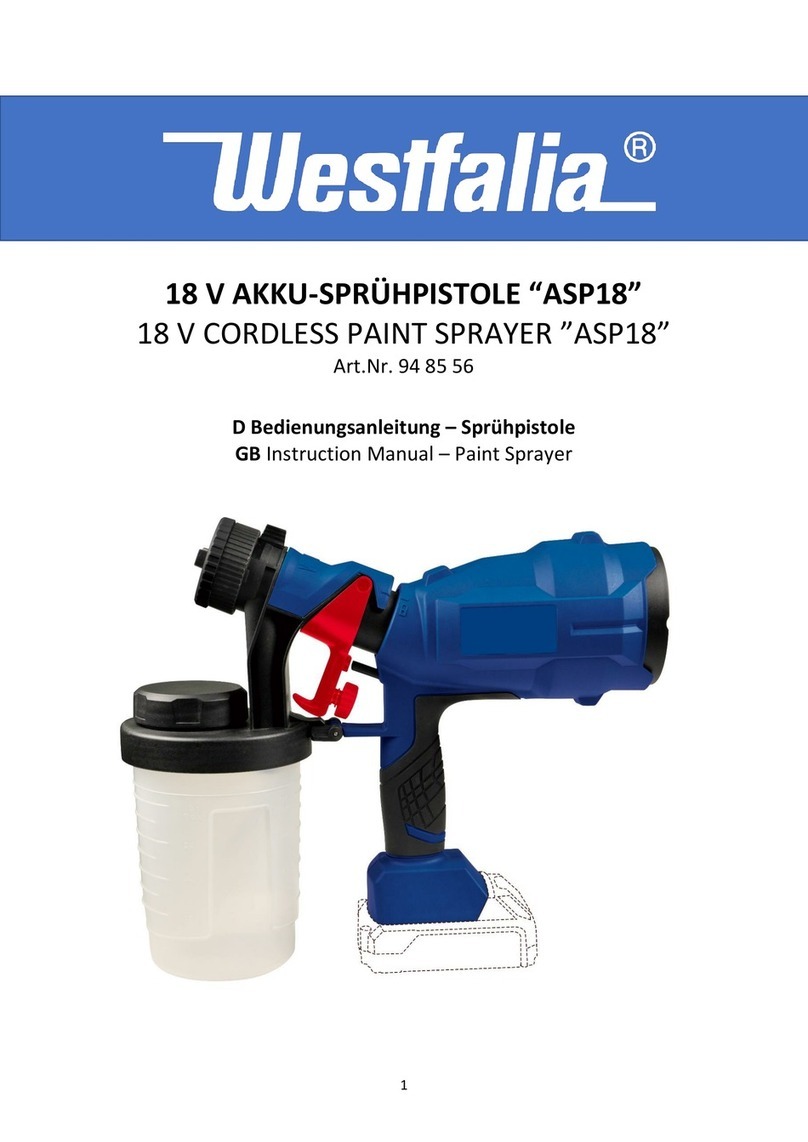
4
Halten Sie Ihre Hände und sonstige Körperteile fern vom Sprüh-
strahl. Falls der Sprühstrahl die Haut durchdringt, nehmen Sie
umgehend ärztliche Hilfe in Anspruch. Das Sprühgut kann selbst
durch einen Handschuh hindurch die Haut durchdringen und in
Ihren Körper eingespritzt werden.
Behandeln Sie eine Einspritzung nicht als einfachen Schnitt. Ein
Hochdruckstrahl kann Giftstoffe in den Körper einspritzen und zu
ernsthaften Verletzungen führen. Im Falle einer Hauteinspritzung
nehmen Sie umgehend ärztliche Hilfe in Anspruch.
Beachten Sie, dass Spritzgeräte, die mit hohem Druck arbeiten
Rückstöße erzeugen, welche in bestimmten Situation Überlas-
tungsschäden beim Bedienen verursachen können.
Halten Sie die Arbeitsumgebung sauber. Nehmen Sie nur soviel
an Farb- und Verdünnungsmittel zum Lackierplatz, wie Sie für
den Lackiervorgang benötigen. Lassen Sie Lack- und Verdün-
nungsmittel nicht offen stehen, sondern bewahren Sie die Pro-
dukte an einem sicheren, durch andere Personen nicht ohne
weiteres zugänglichen Ort auf.
Beim Lackieren darf im Arbeitsbereich keine Zündquelle (z.B.
offenes Feuer, brennende Zigaretten, nicht explosionsgeschützte
Lampen, usw.) vorhanden sein, da beim Lackieren leicht ent-
zündliche Gemische entstehen. Vorsicht bei brennbaren Materia-
lien. Funkenschlag kann das Material entzünden.
Lösemittel und Beschichtungsstoffe können leicht entflammbar
oder brennbar sein, wenn diese verspritzt oder versprüht werden.
Beachten Sie immer die Warn- und Sicherheitshinweis des Lack-
oder Lösungsmittelherstellers.
Bei täglichem Gebrauch, reinigen Sie die Lackierpistole vorzugs-
weise mit einer Wascheinrichtung für Spritzgeräte. Lassen Sie die
Lackierpistole nicht für lange Zeit in der Wascheinrichtung.
Verwenden Sie keine Chlorkohlenwasserstoffe (1.1.1 Trichlo-
räthylen etc.) bzw. Säuren oder alkalische Kohlenwasserstoffe als
Löse- bzw. Reinigungsmittel, da diese Substanzen mit Kompo-
nenten der Farbspritzpistole reagieren und gefährliche Abbau-







































